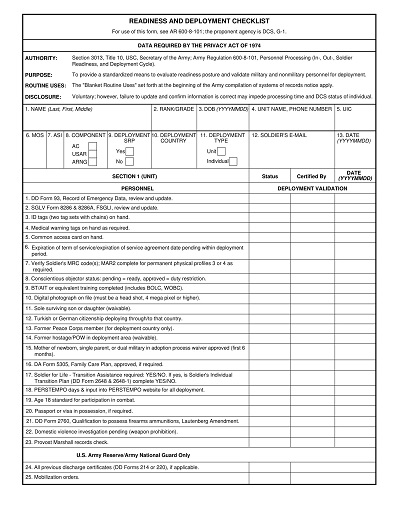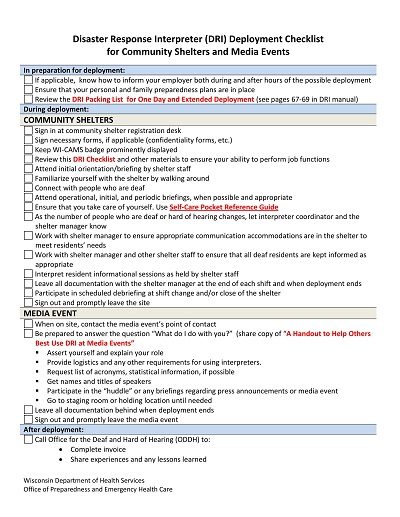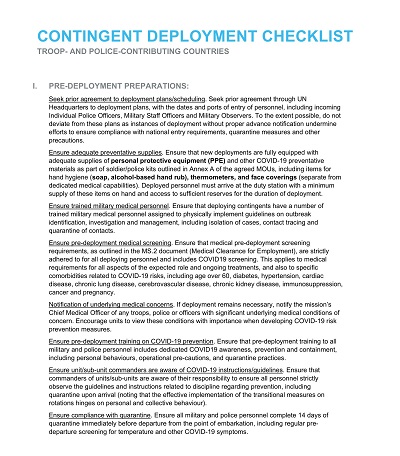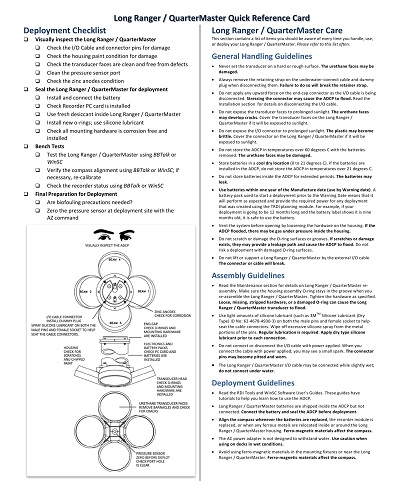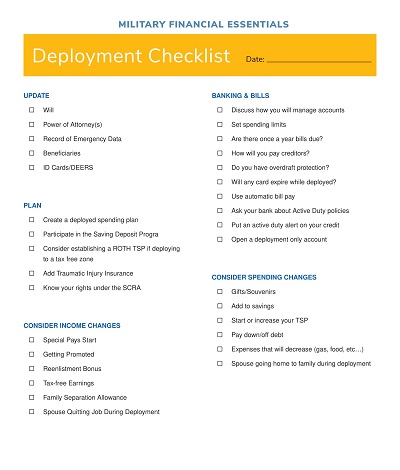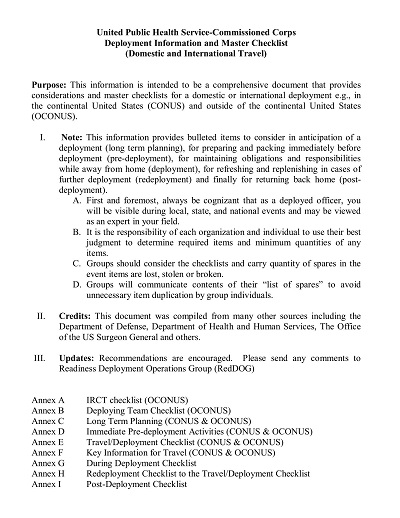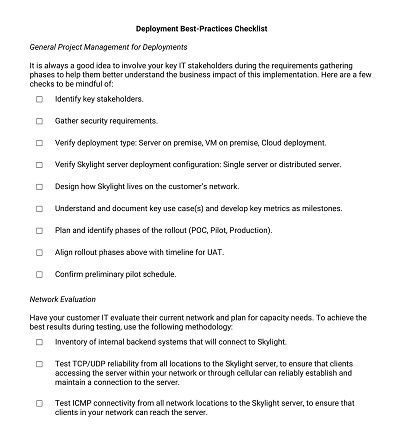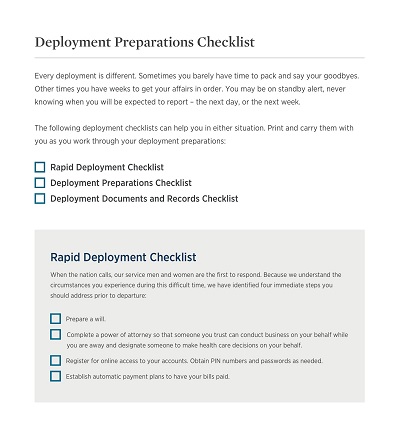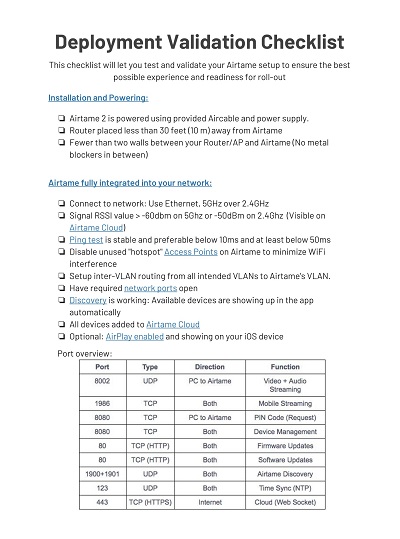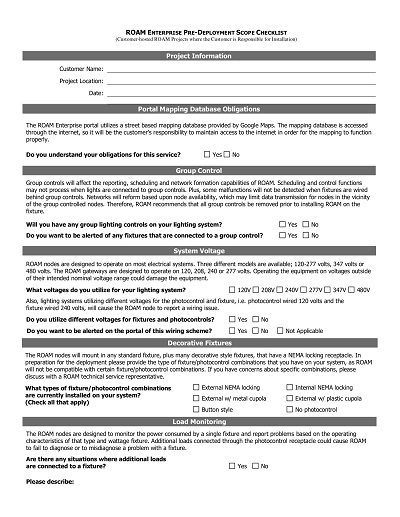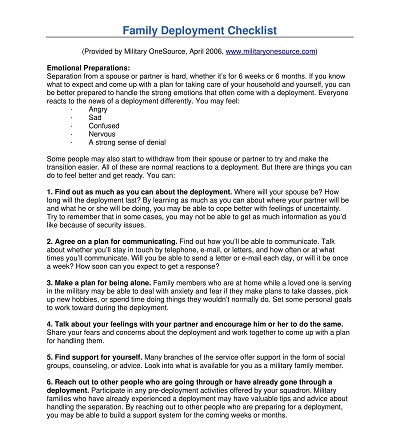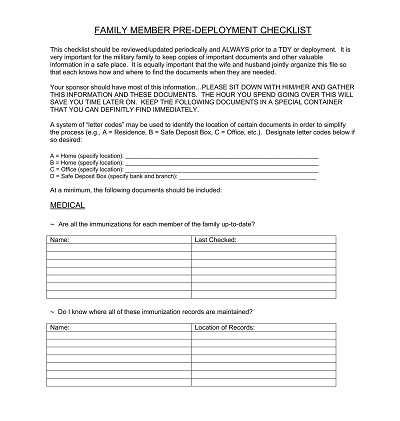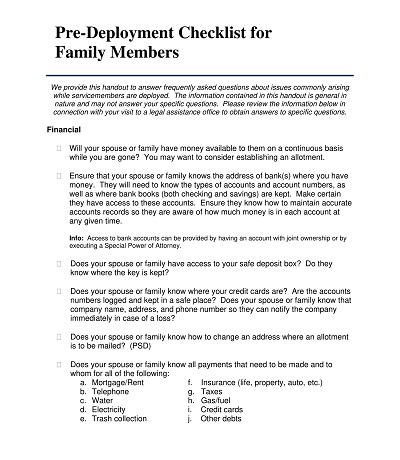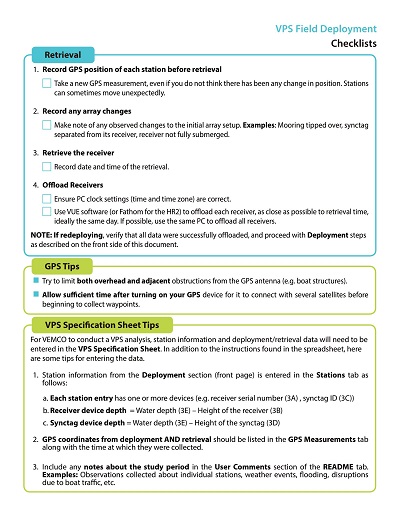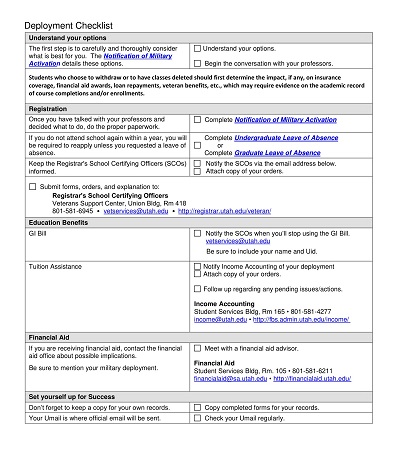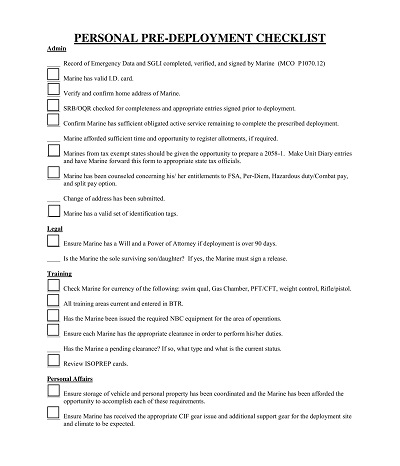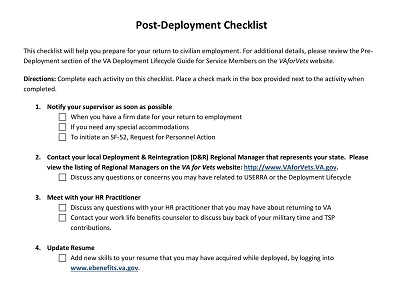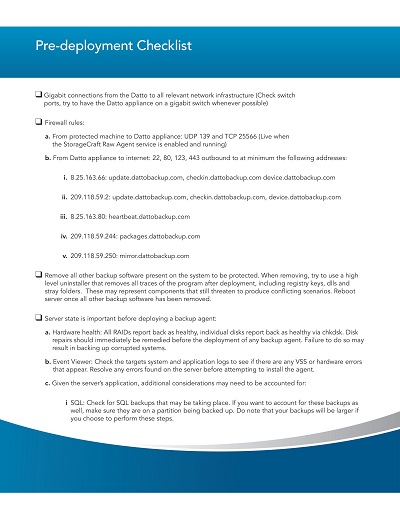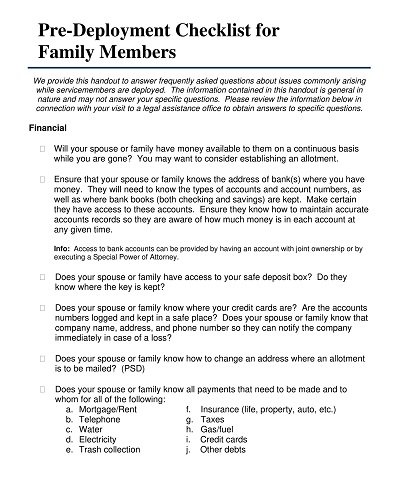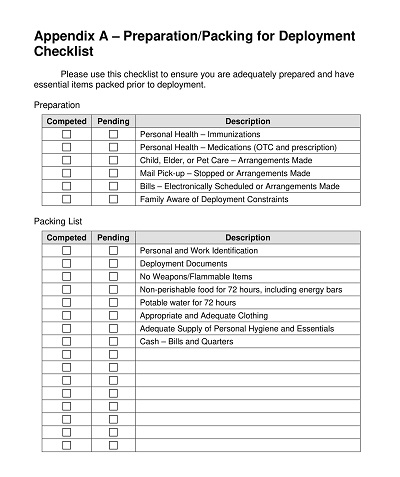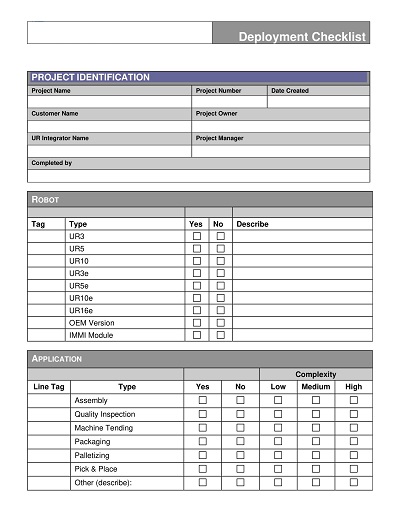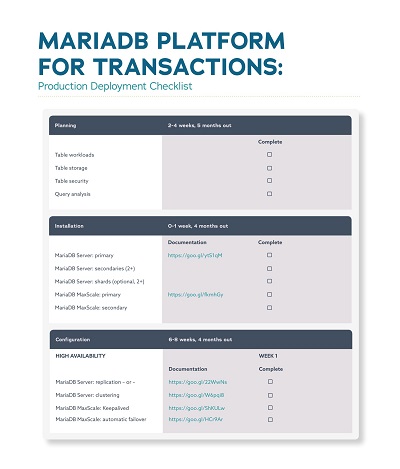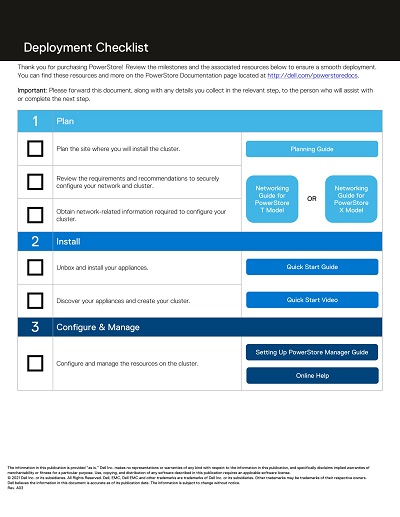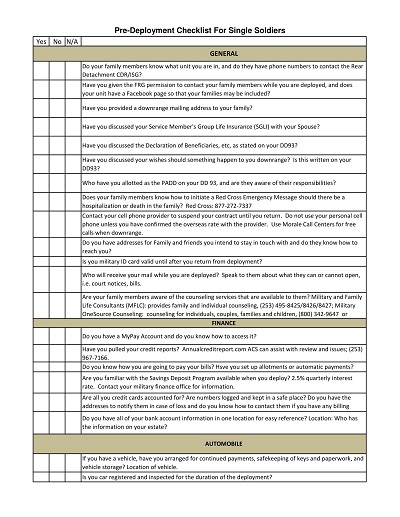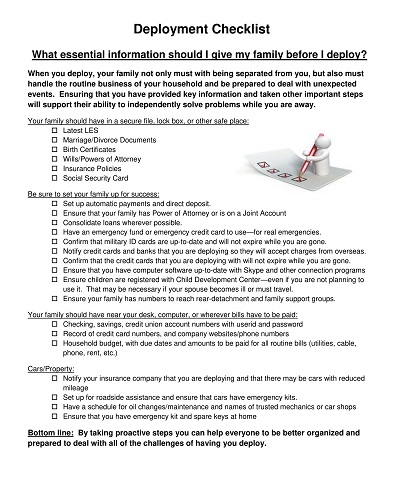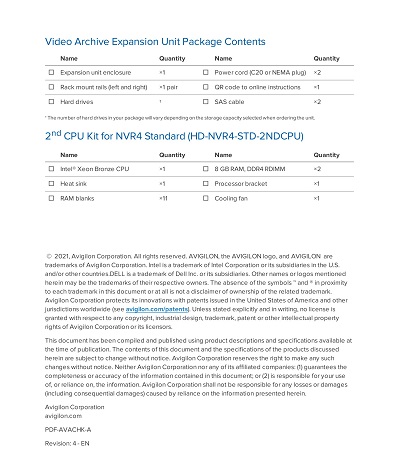46+ Free Simple Deployment Checklist Templates – PDF
The release and installation of software applications and making them accessible to everyone is known as deployment. A deployment checklist is a detailed list of tasks to smooth deployment. It includes testing, configuration, and monitoring to reduce risk and error. An organized checklist improves system reliability and simplifies deployment.
A simple deployment checklist template is a pre-designed sheet that provides a logical approach to managing software development. These editable templates include sections for testing, post-deployment monitoring, and communication plans. You can use any of the below templates as per your requirement. These pre-designed templates save time and ensure no critical steps are ignored.
Download Free Simple Deployment Checklist Templates
What is a Deployment Checklist?
A Deployment Checklist is a practical guide used by teams. It ensures that all necessary steps are followed when releasing a software product. It is a critical tool to avoid missed steps to ensure a smooth and successful launch. The list typically includes tasks such as code reviews, testing procedures, backup strategies, and monitoring arrangements.
The checklist helps to optimize the deployment process, improve efficiency, and minimize errors for easy software launch. It goes hand in hand with a deployment plan: moving a project into production and ensuring all details are considered. For a smooth consumer experience, the deployment plan:
- Notify all team member
- Teach users how to use new features
- Ensure a bug-free product
The project manager creates the deployment plan, which is then reviewed by the team and scheduled for implementation.
Who Uses a Deployment Checklist?
A deployment checklist is used in the tech industry, particularly in software development and IT management. This includes roles such as software developers, project managers, and system administrators. It benefits complex projects where many tasks must be coordinated and executed in order. It used in
- Software Developers: To ensure that their code is easily integrated and deployed.
- IT Operations Teams: To manage infrastructure configurations, server setups, and overall system deployment.
- DevOps Engineers: To automate deployment processes and ensure consistency.
- Project Managers: To track progress, identify potential risks, and ensure timeline adherence.
- Quality Assurance (QA) Teams: To validate testing procedures and confirm that all quality assurance measures have been satisfied before deployment.
- Individual Users: For personal or specific role-related tasks during software deployment.
- Business Stakeholders: To monitor the deployment progress and ensure alignment with business goals.
The Purpose of a Deployment Checklist
A deployment checklist ensures the successful implementation of a software product into a live environment. It outlines each step of the deployment process, from pre-deployment preparation to post-deployment review, to ensure no crucial aspect is neglected.
This approach minimizes the risk of errors and brings clarity among the team members involved in the deployment. The checklist acts as a knowledge storehouse and evolves with each deployment. It is an organized tool to ensure smooth, error-free software or systems deployment. Its primary purposes include:
Risk Mitigation
- Identify potential risks and challenges in advance.
- Offer preventive measures and strategies to mitigate risks during deployment.
Communication and Coordination
- Facilitate communication among various teams.
- Ensure coordinated efforts for a successful deployment.
Verification and Validation
- Verify software requirements.
- Perform code reviews and validation procedures.
- Run unit tests to ensure the reliability of the deployed system.
Documentation
- Provide a documented record of the deployment process for future reference.
- Enhance accountability and traceability of the deployment activities.
Key Elements of Deployment Checklist Templates
The key Elements Examples of simple Deployment Checklist Templates:
- Project Overview: A brief synopsis includes objectives and expected outcomes.
- Hardware/Software Requirements: A list of all necessary hardware and software.
- Installation Steps: A detailed guide on how to install or deploy the product.
- Configuration Details: Instructions for configuring the product after installation.
- Testing Procedures: Steps to thoroughly test the deployment for any possible issues.
- Rollback Plan: An emergency plan in case the deployment needs to be undone.
- Data Migration: Details about any data that needs to be transferred during the deployment.
- Access Controls: Information on who has access to various system parts.
- Scheduled Downtimes: Any expected outages during the deployment process.
- Risk Assessment: Identify potential risks and their mitigation plans.
- Training Plan: Details about training sessions for users.
- Communication Plan: A plan to inform all shareholders about the deployment status.
- Sign-off Procedures: Approval processes are necessary before moving to the next phase.
- Support Strategy: A plan to provide support after deployment.
- Review and Feedback Process: A procedure to review the deployment and gather feedback for future improvements
Types of Deployment Checklist
Here are some types of deployment checklists:
- General Deployment Checklist: This checklist is for any organization seeking a reliable deployment method. Its wide-ranging application ensures that fundamental steps are covered. The checklist provides a solid foundation for any deployment scenario. A general checklist can help predict potential issues and plan no matter the project’s specifics.
- Software Deployment Checklist: Designed to ensure that software deployments are performed efficiently. It involves a planning phase, a testing process, and a user training program. The checklist ensures that the software performs post-deployment and that users can interact with the software.
- Web Deployment Checklist: Vital to deploy web applications. It helps ensure a smooth transition and takes a web application from a development environment to the online sphere. It focuses on aspects such as server configuration, security, and performance and ensures the smooth running of the web application post-deployment.
- Production Deployment Checklist: Emphasizes stability and performance. It ensures the system can handle real-world loads and perform under varying conditions. It covers areas to balance load, redundancy, and check system.
- Application Deployment Checklist: Designed to suit the unique needs of each application. It ensures all specific requirements are met and resolved before the application is deployed. It is helpful to manage application dependencies and configuration settings.
- Cloud Deployment Checklist: Deploying applications or services on cloud platforms comes with its considerations. This checklist helps identify and address these aspects and ensure a successful cloud deployment. It guides organizations in choosing the right cloud provider, securing data, and managing costs.
- Server Deployment Checklist: Deploys and configures servers. It ensures that both hardware and software aspects of server deployments are considered. This approach gives organizations the confidence that their servers are ready for use post-deployment.
- Mobile App Deployment Checklist: Vital to deploy mobile applications. It considers app store requirements, device compatibility, and user experience. The checklist ensures that the mobile app is deployable across various devices, which is helpful.
- Database Deployment Checklist: Ensures that databases are deployed smoothly. It covers schema changes, data migration, and database backups. The goal is to cut time off, ensure data integrity, and maintain high availability post-deployment.
- Network Deployment Checklist: Addresses considerations related to network infrastructure and connectivity. It ensures the network is configured correctly, secure, and ready to handle the expected load. It covers network protocols, security settings, and redundancy plans.
- Hardware Deployment Checklist: All about deploying physical hardware components efficiently. It ensures that all hardware is properly configured, tested, and ready to be used. It covers everything from the initial hardware setup to testing and troubleshooting.
- Rollback Checklist: Outlines the steps for reverting to a previous state in case of deployment issues. It provides a safety net and allows organizations to revert changes when something goes wrong during deployment. It covers backup restoration, system checks, and communication procedures.
- Emergency Deployment Checklist: Developed for situations that need rapid and unplanned deployments. It ensures that deployments are managed efficiently, even in emergencies. It guides teams through the steps needed to execute a rapid deployment.
How to Use a Deployment Checklist Template?
A deployment checklist template is a systematic process to ensure a smooth and error-free deployment. Follow these steps:
Step #01: Select a Template
Choose any of the above free, printable, easy-to-use deployment checklist templates. These templates are easy to use, and you can customize them per your needs. The template should align with the complexity and requirements of your deployment.
Step #02: Download a Template
Once you’ve found a suitable template, proceed to download or make a copy of it. You can download them in Word or PDF and easily edit them as required. This step saves time and provides a solid foundation to start with. You don’t need to start anything from scratch; download and use it.
Step #03: Customize for Your Needs
You should adjust the checklist to fit your specific deployment requirements. Since every project has unique aspects, add, remove, or modify templates as per needs. This customization ensures that the checklist is for your deployment process.
Step #04: Define Roles and Responsibilities
Assign roles and responsibilities to team members for each task in the checklist. A clear definition of roles assures accountability. It helps to avoid confusion or overlap during the deployment process.
Step #05: Set Timelines
Create a realistic timeline for each task. Consider dependencies between tasks and divide enough time for each one. This will help avoid a rushed deployment and ensure a smooth, error-free process.
Step #06: Review and Confirm
Conduct a thorough review of the checklist. This ensures that all the necessary steps are included and are in the correct order. It also serves as a final check to ensure readiness for deployment.
Step #07: Collaborate with Your Team
Share the checklist with your deployment team. This builds collaboration and invites valuable feedback. This step helps to address any concerns or suggestions and make the checklist more effective.
Step #08: Execute Deployment
Follow the checklist systematically during the deployment phase. As each task is completed, it should be marked off on the checklist. This tactic helps track progress and ensures all tasks are completed.
Step #09: Monitor and Document
Real-time monitoring of the deployment is critical. Any issues or deviations from the checklist should be documented and addressed promptly. This step helps to maintain a record of the process and aids in identifying any potential areas of concern.
Step #10: Post-Deployment Review
After the deployment, conduct a post-deployment review. This evaluation assesses the effectiveness of the checklist and identifies areas for improvement. It refines the process for future deployments and makes them more efficient.

